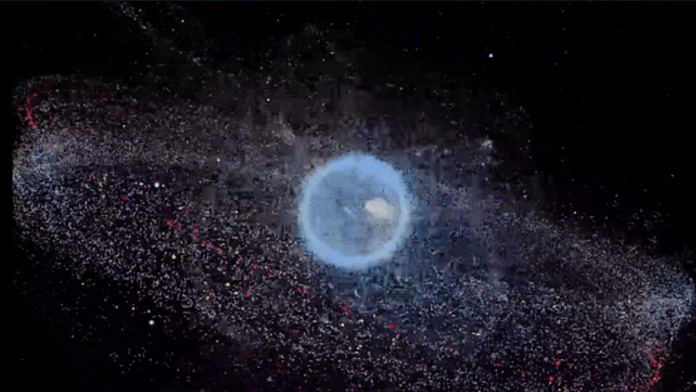Bengaluru: The European Space Agency (ESA) has announced that a consortium led by a Swiss start-up called ClearSpace has been selected to fly into orbit and remove space debris. This will be the first space mission to remove a piece of debris from orbit.
The mission will be launched in 2025, as a part of a new market that will cater to in-orbit servicing and debris removal.
ClearSpace consists of space debris experts from Ecole Polytechnique Fédérale de Lausanne (EPFL) research institute in Lausanne, Switzerland.
“This is the right time for such a mission,” said Luc Piguet, founder and CEO of ClearSpace in ESA’s statement.
“The space debris issue is more pressing than ever before. Today, we have nearly 2,000 live satellites in space and more than 3,000 failed ones. And in the coming years the number of satellites will increase by an order of magnitude, with multiple mega-constellations made up of hundreds or even thousands of satellites planned for low Earth orbit to deliver wide-coverage, low-latency telecommunications and monitoring services. The need is clear for a ‘tow truck’ to remove failed satellites from this highly trafficked region.”
Also read: One day soon, satellites will outnumber the stars we see from Earth
Junk in space
Space debris is a growing threat to humanity’s space activities, and is caused by various items in space such as non-functioning satellites, remnants of collisions in space, discarded items from spaceflights such as rocket stages, missions like India’s ASAT, which tested an anti-satellite weapon by blasting it into pieces, and even flecks of paint from other missions.
Elon Musk’s SpaceX has come under fire for its plan of launching up to 42,000 satellites. Over 120 are in orbit today and have already been criticised for not just interfering in astronomical observations, but also for increasing the risk of collisions in space and space debris.
Space debris pose a great risk to orbiting spacecraft as space becomes more and more accessible. There are over 128 million bits of debris that are smaller than 1 cm, about 900,000 pieces of debris that are between 1cm and 10cm, and about 34,000 pieces that are larger than 10cm in orbit around the Earth.
If any of these come in contact with any other satellite, telescope or orbiting stations, owing to the high speeds, they can either perforate exterior hulls or cause damage like scratches. On extremely expensive equipment that requires structural rigidity to function in the extreme conditions of space, even a tiny scrape is a matter of great concern.
The biggest threat posed to all objects in space would be something called the Kessler syndrome, which is a runaway chain reaction of collisions starting from one collision, whose debris impact other objects, leading to exponential, uncontrolled increase of debris in orbit.
Also read: Elon Musk’s satellites dot the heavens, leaving stargazers upset
ESA’s solution
The ClearSpace mission is a part of ESA’s new Space Safety programme that is actively attempting to clean up space and develop innovative technologies for this purpose. ESA has long been a proponent of active space debris removal, marking it as a strategic goal in its programme.
“Imagine how dangerous sailing the high seas would be if all the ships ever lost in history were still drifting on top of the water,” ESA director general Jan Wörner said in the statement. “That is the current situation in orbit, and it cannot be allowed to continue.”
The mission will target a piece of debris called Vespa (Vega Secondary Payload Adapter), an upper stage of a Vega rocket belonging to the ESA that was launched in 2013. Vespa is orbiting the Earth at approximately 800 km, weighs 100 kg and will be captured first.
ClearSpace-1’s “chaser”, which will engage in the capture, will be launched first into an orbit of 500km for testing before being raised to the required orbit. The chaser and Vespa will then be deorbited so that they can burn up in the atmosphere.
Objects burning up in the atmosphere are usually transformed to smaller chunks which fall into the oceans for the most part.
Also read: India’s A-SAT missile strike added to space debris like Kanpur adds sewage to Ganga






